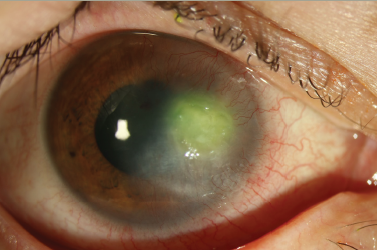
A Comprehensive Review of Acanthamoeba Keratitis: Insights and Innovations
Abstract
A brief overview of Acanthamoeba keratitis, emphasizing its significance, the challenges it presents in diagnosis and treatment, and a preview of the innovations in managing this condition.
Introduction
- Background on Acanthamoeba keratitis, including its epidemiology, risk factors, and the pathophysiology of the disease.
- The relevance of the topic to current ophthalmologic practice and the importance of staying updated with the latest diagnostic and therapeutic approaches.
Etiology and Risk Factors
- Detailed discussion on the causative agent, Acanthamoeba, including its life cycle and how it infects the cornea.
- Overview of risk factors such as contact lens wear, exposure to contaminated water, and poor lens hygiene practices. Link to CDC’s page on Acanthamoeba for comprehensive information on the organism and associated risk factors.
Clinical Presentation and Diagnosis
- Description of the clinical presentation, noting symptoms such as severe pain, redness, blurred vision, and photophobia.
- Advances in diagnostic techniques, including confocal microscopy, polymerase chain reaction (PCR), and culture methods. Embed links to studies or guidelines that discuss diagnostic criteria and methods in depth, such as those found on PubMed or ClinicalKey.
Treatment Strategies
- Review of current treatment strategies, including the use of topical anti-amoebic medications (e.g., biguanides and diamidines), the role of corticosteroids, and surgical interventions like corneal transplantation.
- Discussion on the challenges of treatment, including drug resistance and the need for prolonged therapy. Reference UpToDate for evidence-based treatment recommendations.
Latest Innovations and Research
- Highlight recent innovations in treatment and diagnosis, such as the development of new antiamoebic drugs, advances in surgical techniques, and the potential of immunotherapy.
- Discuss ongoing research into vaccine development and other preventive measures. Include links to recent studies from ClinicalTrials.gov or academic journals.
Conclusion
- Summarize the key points discussed, emphasizing the importance of early diagnosis and the challenges posed by Acanthamoeba keratitis.
- Call to action for continued research and innovation in the diagnosis and treatment of this condition.
References
- Include a comprehensive list of references used in the article. For high-quality, peer-reviewed sources, utilize databases such as PubMed and ScienceDirect.


